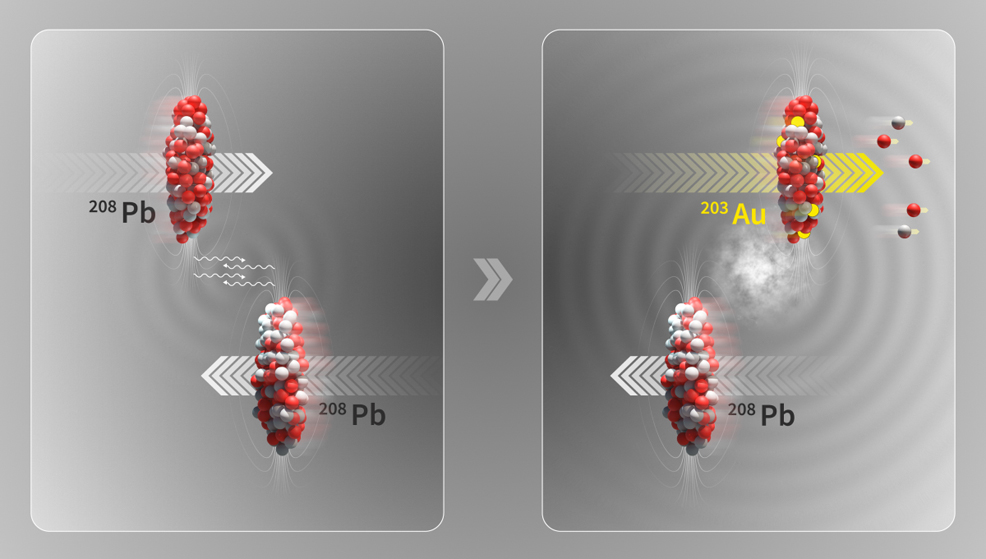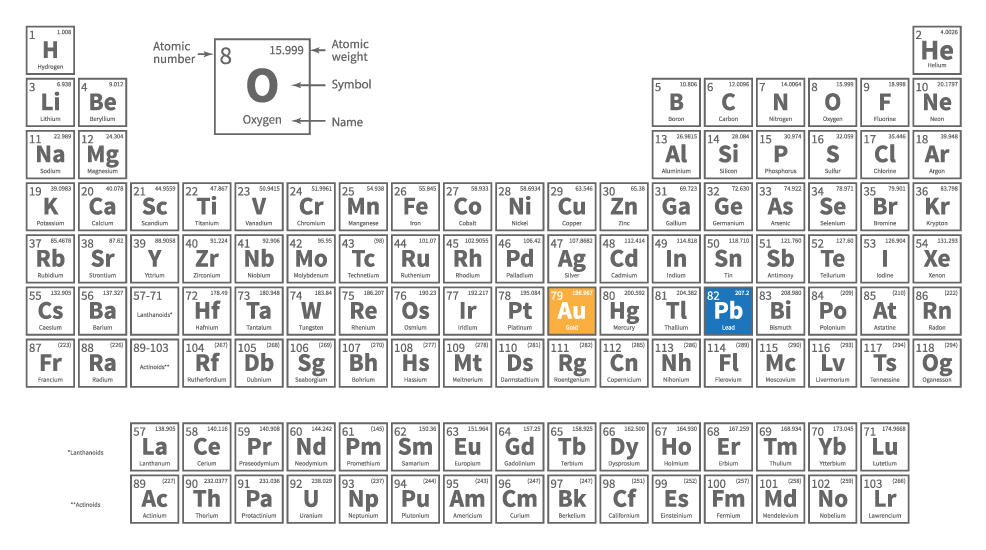
17th May 2025 Large Hadron Collider turns lead into gold Using the ALICE experiment at CERN, scientists have produced gold from lead in quantities far exceeding those of earlier attempts.
In a result that echoes the dreams of ancient alchemists, physicists at CERN have confirmed and extended earlier experiments showing that lead can be transformed into gold. This modern-day chrysopoeia – the mythical turning of base metals into noble ones – occurred not through magic or mysticism, but via the immense power and precision of high-energy particle physics. While the concept had already been demonstrated previously, the Large Hadron Collider (LHC) has now produced gold nuclei in vastly greater numbers, offering new insights into the underlying physics of this rare nuclear process. The transformation took place using the ALICE (A Large Ion Collider Experiment) detector, one of the four major experiments at the LHC. ALICE is designed to study quark-gluon plasma, a state of matter that existed just microseconds after the Big Bang. To recreate the extreme conditions required for this research, scientists accelerated beams of lead nuclei to nearly the speed of light and brought them close together. Instead of colliding head-on, the lead nuclei passed extremely close to one another. These "near misses" generated powerful electromagnetic fields, enhanced by the large positive charge of each nucleus – containing 82 protons, the highest of any stable element. Travelling at over 99.999% of light speed, they compressed their electromagnetic field lines into a thin, pancake-like shape, perpendicular to their motion. This produced extremely short-lived bursts of high-energy photons – particles of light – which then interacted with nearby nuclei. In some cases, a photon would strike a nucleus and trigger electromagnetic dissociation, exciting internal oscillations and causing the nucleus to eject a few protons and neutrons. When a photon removed exactly three protons, the lead nucleus (which normally has 82) ended up with 79, the atomic number of gold.
Periodic table of elements, with gold (Au) and lead (Ph) highlighted.
Over the past century, scientists have pursued the transmutation of elements into gold with varying degrees of success. In 1941, researchers achieved the synthesis of gold by bombarding mercury with neutrons, though the resulting isotopes were radioactive and short-lived. In 1980, Glenn Seaborg's team at Lawrence Berkeley National Laboratory transformed several thousand bismuth atoms into gold by removing protons and neutrons, but this approach required immense resources, rendering it impractical for large-scale production. During the early 2000s, CERN's Super Proton Synchrotron (SPS) facilitated near-miss collisions of lead nuclei, yielding only trace amounts of gold nuclei. More recently, in 2022, CERN's ISOLDE facility produced 18 gold nuclei by bombarding a uranium target with high-energy protons. Building upon these efforts, the ALICE experiment at the Large Hadron Collider replicated the SPS's method at much higher energies. This initially resulted in the creation of 86 billion gold nuclei, equivalent to 29 picograms. With recent upgrades and increased luminosity across the facility's ongoing experimental campaigns, the total number of gold nuclei produced has now reached 260 billion, amounting to 90 picograms. While still an infinitesimal quantity, this achievement represents a production scale many orders of magnitude greater than any previous experiment. "Thanks to the unique capabilities of the ALICE detector, the present analysis is the first to systematically detect and analyse the signature of gold production at the LHC experimentally," said Uliana Dmitrieva, a researcher at the facility. "The results also test and improve theoretical models of electromagnetic dissociation which, beyond their intrinsic physics interest, are used to understand and predict beam losses that are a major limit on the performance of the LHC and future colliders," added John Jowett, also of the ALICE collaboration. So far, the total amount of gold produced at CERN amounts to trillions of times less than needed to craft even a single piece of jewellery. Yet this modest milestone hints at extraordinary possibilities awaiting humanity centuries from now. Imagine particle accelerators of the far future, vastly surpassing the LHC in both scale and energy, routinely manipulating atomic nuclei with precision and ease. Gold, historically prized for its scarcity, might become as abundant and accessible as metals we now take for granted. In the late 19th century, for example, aluminium – once rarer and more valuable than gold – became commonplace following the invention of an efficient extraction method. Advanced nuclear transmutation technologies could one day bring about a similar revolution in our supply of precious elements. In that distant era, not only gold but also platinum, iridium and other expensive materials could be routinely unlocked from more common sources. The alchemists' dream would not merely be realised; it could transform economies, industries, and our very relationship with matter itself.
Comments »
If you enjoyed this article, please consider sharing it:
|
||||||









